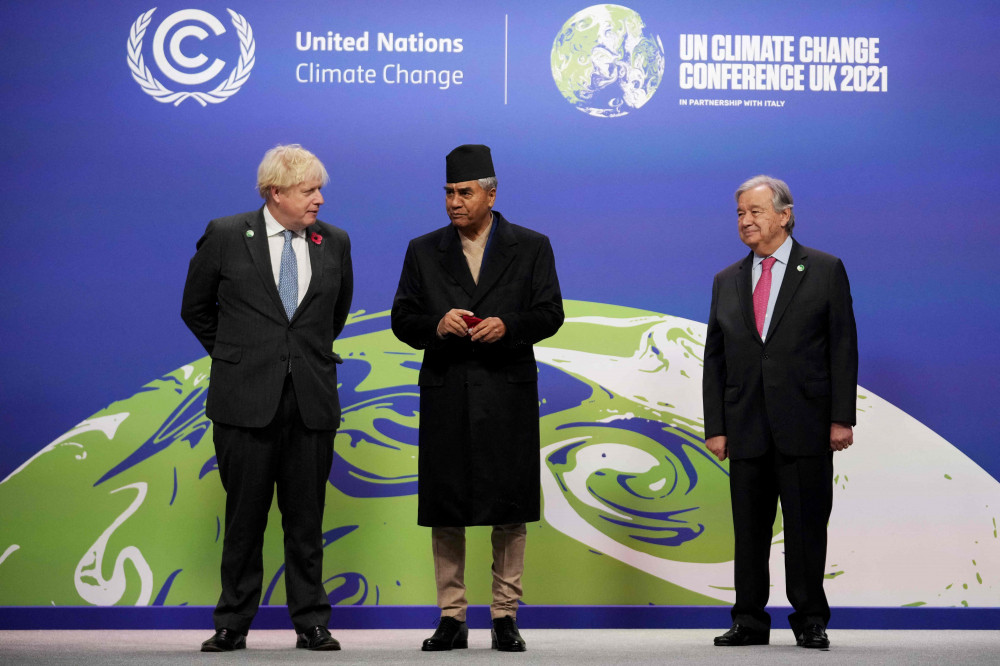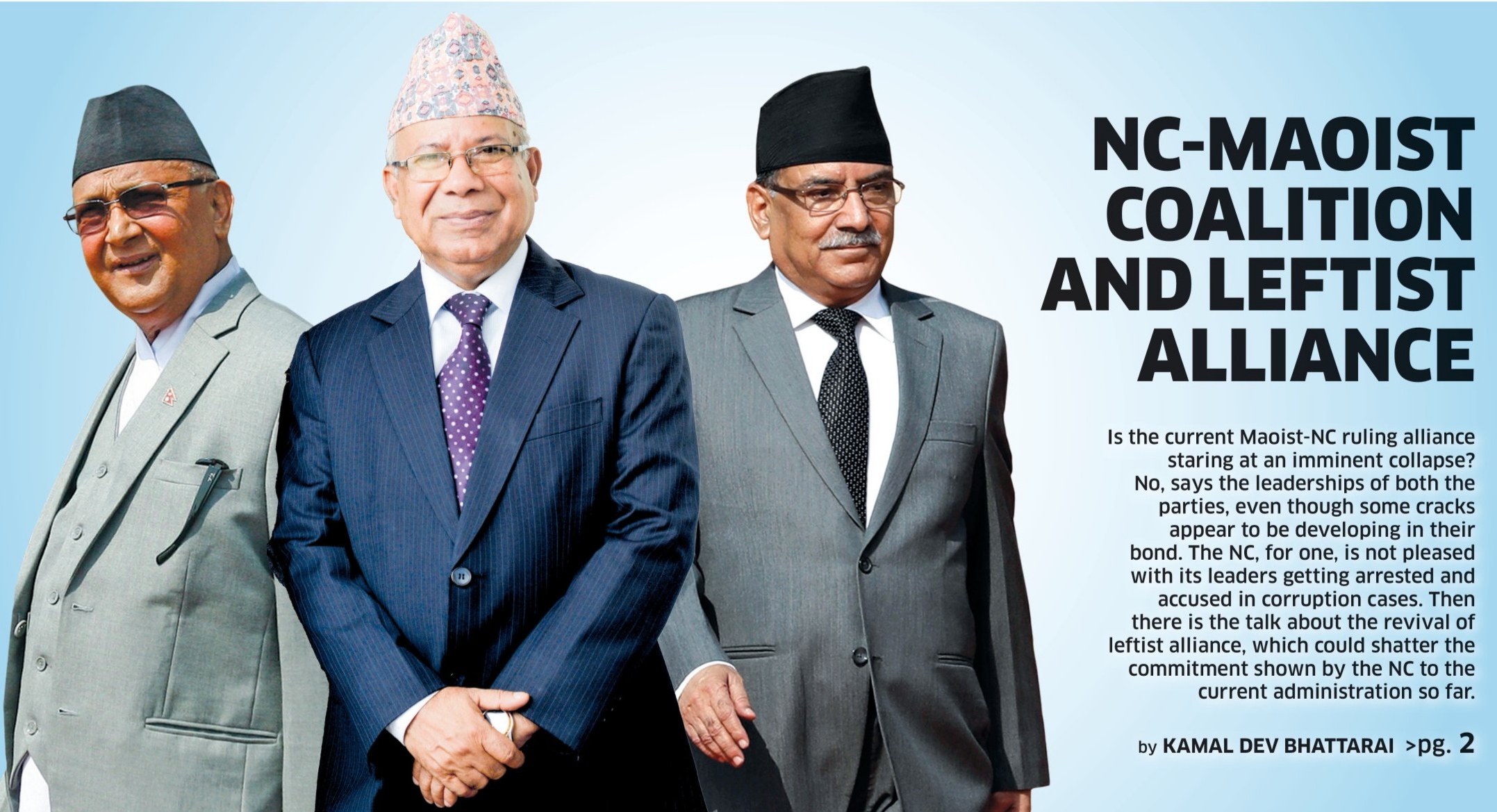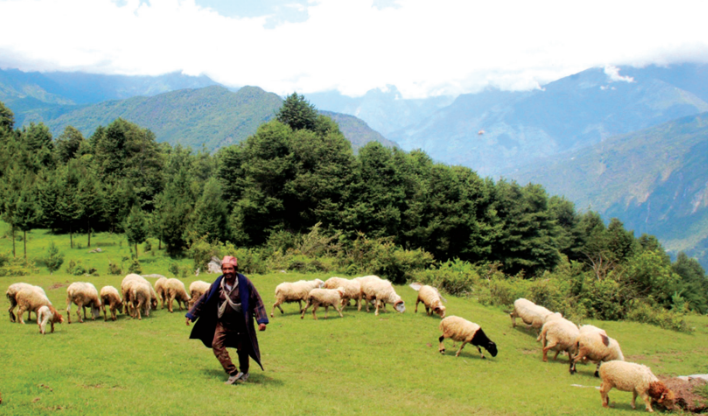How strong is the anti-incumbency wave?
If you visit cafes and tea shops around Kathmandu valley, you’ll find people who harbor a deep resentment against the incumbent political parties. They say they prefer untested new candidates who can bring real changes. This sentiment among voters rings true across the country. After the local elections of May 13, that saw the rise of independent mayoral candidates like Balen Shah and Harka Sampang, many Nepalis seem to be eager to do away with old, established parties and their leaders and vote for outsiders. Even top leaders like Sher Bahadur Deuba, KP Sharma Oli and Pushpa Kamal Dahal are facing the heat of independent candidates. Analysts say realistically, independent candidates are not in a position of winning the elections against seasoned politicians, but they can surely change the course of election outcomes. Political analyst Krishna Khanal says though anti-incumbency wave has become strong this time due to the failure of major political parties that have been at the helm of power in the past three decades. “True, a new political party will not sweep them away overnight, but it is high time that the established parties changed their ways, brought new agenda and allowed young leaders to drive the county,” says Khanal. “The same old faces have been running this country since 1990 and they have failed to deliver. So, resentment among the public is understandable.” Jagannath Lamichhane, an independent candidate for the provincial assembly from Kathmandu-5, says people’s response to independent candidates is encouraging. “People want to vote for outsiders but with so many independent candidates in the race, their winning prospects are low.” Khanal says major parties should take the recent surge in independent candidates as an important intervention and a lesson to correct their old ways. He believes that independent candidates cannot become an alternative to the political parties. “But there is certainly an important lesson that old parties can learn from the enthusiasm that the public has shown towards independent candidates.”
The tricky post-election power-sharing deal
Who will be the next prime minister after the Nov 20 elections? The answer depends on whom you ask. But one thing is sure: one of the old faces will take charge of the country. If you talk to CPN (Maoist Center) leaders, they explain why the party leader Pushpa Kamal Dahal is a natural candidate for the top job. They say Dahal had backed Sher Bahadur Deuba’s prime ministerial bid in July 2021 and it is time for the Nepali Congress to return the favor. The NC, however, is a divided house. It is not entirely keen on handing over the prime minister’s role to Dahal. Deuba’s core supporters wish for his continuation as prime minister after the elections. They argue that the largest party should lead the government in the parliamentary system. NC leader Min Bahadur Bishokarma says there has yet to be an agreement on post-election power-sharing. “The party may lead the government with a condition of transfer of power to Dahal after a certain period.” The NC, in its election manifesto unveiled on Oct 29, has mentioned that the post-election government will be formed under its leadership. Meanwhile, the main opposition, CPN-UML, has already announced its chair KP Sharma Oli as the party’s prime ministerial candidate. The main opposition is contesting the elections alone in most constituencies against the five-party alliance of NC, Maoists, Unified Socialist, Janata Samajbadi Party and Rastriya Janamorcha. Though the UML’s chances of emerging victorious over the alliance appear slim, its leaders are still hopeful. Since there won’t be one runaway winner, the formation of the next government will be based on power sharing, an issue that appears more complex than it appears. In Nepal, power-sharing agreements rarely take place based on shared ideology or vision among parties, and as a result, they are often fickle. As major parties have a history of forming and breaking alliances, there is no guarantee that Nepal will have a stable government after the elections. If there is no crack in the ruling five-party alliance, chances are the Maoist party will drive a hard bargain with the NC to clinch the prime ministerial seat. Maoist leader Dahal has publicly announced that he would like to be at the helm of power to implement his vision of economic policy. For him to become the next prime minister, the role of CPN (Unified Socialist), another party in the ruling alliance, will be instrumental. Unified Socialist chair Madhav Kumar Nepal has already tapped Dahal as the next prime minister. On October 18, Nepal announced at a public function, which was also attended by Deuba, that Dahal would lead the next government. Nepal and Dahal are closer to each other, and many see the prospect of their parties unifying after the elections. What will be Congress’s position on Dahal’s claim to the seat of the executive is not entirely clear so far. However, a senior Maoist leader close to Dahal is hopeful that Deuba will concede. “He [Deuba] has not made any promises, but he is also not batting away the idea of handing over the premiership to Chairman Dahal.” The Maoist leader suspects that Deuba is keeping silent so as not to rile up his own party leaders. Chances are that Dahal and Deuba may have reached a gentleman’s agreement on power-sharing when their parties decide to enter the electoral alliance. Deuba will likely try to convince Dahal into splitting the five-year government tenure and taking turns to lead the country. But Congress leader Nainsingh Mahar is not wholly convinced that Dahal will agree to the arrangement. “I believe Dahal will claim for unconditional role of a prime minister. If that doesn’t happen, he will likely break the alliance.” Mahar says Deuba also faces the challenge of convincing his own party leaders after the elections. Inside the Congress, there is a strong opposition against the idea of the party relinquishing the government leadership to the Maoist party. To take a final call on power-sharing, some leaders say Deuba is eagerly waiting for the election results. If the vote outcome allows the NC to form a coalition government without the support of the Maoist Center, the situation will be entirely different. In such a scenario, the Congress will likely seek support from the Madhes-based parties and the Unified Socialist to form the next government. But if the Maoist party, like now, emerges as a decisive factor, Deuba will have to agree to hand over the power to Dahal. To prevent the possible rise of the left alliance, some political analysts say, this is the only way forward for Deuba and his party. If Dahal were to become the next prime minister, Congress would likely claim some critical ministries, as well as the post of parliament speaker. After the Constituent Assembly elections, candidates from left parties have successively become the speaker. The NC, for once, wants to head the lower house, particularly after former Speaker Agni Prasad Sapkota, from the Maoist party, took many controversial moves while leading the lower house, including his roles in splitting up the UML and delaying the House endorsement of the Millennium Challenge Corporation Nepal Compact. Though the post of parliament speaker is supposed to be impartial, Nepali parties have been using it to serve their own political interests. The Unified Socialist is also likely to make a bid for some important ministries and positions of influence in the power-sharing negotiations based on how the party figures in the government formation process. As for other fringe parties in the five-party alliance, they will most likely settle for small ministries and ceremonial positions. Power-sharing in seven provinces is another critical factor that could also affect the federal government configuration. And in case the five-party alliance disintegrates, the role of UML will be crucial for the formation of the next government. As the party has already projected Oli as a prime minister, it will be hard for the UML to hand over the government leadership to other parties. Some UML leaders are already predicting that squabbling in the ruling alliance over power-sharing will, one way or another, help their party. They are even hopeful about securing the majority seats, on the account of a poor vote transfer among the alliance. However, other leaders have made a more modest projection of securing 70 of the 275. Inside the NC, there are two projections. Leaders close to Deuba say the party is likely to win around 100 seats (70 in first-past-the-post voting system and 40 in proportional representation), but leaders from the anti-establishment camp say they will likely secure only around 90 seats, owing to the intra-party dissatisfaction. The Maoist party, meanwhile, expects to win at least 50 seats. The major parties could also see their voter base chipped away by the recent popularity of independent candidates. No matter which party forms the next government, Nepal will not have political stability for another five years. There is no clear winner in the electoral race of many political alliances based on experience rather than a shared vision for the country. The next five years will likely continue to see frequent government changes and political crises.
Contest of the young turks
As the country prepares for the second federal and provincial elections, the categories of youth and independent have attracted national politics. There has been a steady rise of ‘independent’ candidacy either as rebels from the existing political parties or as candidates from other political formations. Similarly, the cry for youthful candidates is also making rounds in the political circles. However, it is altogether a different matter when it comes to defining who is a youth. With senior leaders setting a high age bar, the leadership of the Nepali politics could well be termed as ‘gerontocratic’. Therefore, even those leaders that may well be beyond fifty years of age come to acquire the title of a ‘youth’ leader. But there is another set of young leaders who are young by age. This article, however, will focus on two sets of young leaders that are vying for electoral success in this election. One of them belongs to the existing mainstream political parties. They have either risen up the ranks or are in the process of doing so. They may well be considered the future of that respective party. The other set is represented by a group of young contestants who are in the fray either as independent candidates or belong to the new political parties. These candidates aspire to challenge and contest the leaders from the dominant political parties. However, some interesting questions that should be answered are how are the two sets of young contestants different or similar to each other? Do they represent different political worldviews? Break from the patron-client relation The emergence of a new set of contestants especially in select urban areas indicates a breakdown of the traditional patron-client relationship that has been an important characteristic of Nepali political culture. Given the rise of a new class of professionals who believe that they do not require patronage from the political parties/leaders, this group is refusing to be a fence sitter on the political front. They believe that given their technical and professional expertise, these new crops of political aspirants have it in them to solve the problem, which they attribute to the working of the political parties. A look at their approach and ideas however, gives one an impression that they are highly programmatic in their approach. They may be one-issue or some-issue oriented parties lacking a comprehensive approach to myriads of issues, especially one that define macro politics of Nepal. The other feature of these new sets of actors is their attempt to give politics a brand. As one independent candidate vying in this election from Bagmati province said to this scribe “we are attempting to make politics a new lifestyle”. He and many like him rue the fact that politics has limited space for urban upwardly mobile youth. They want to change that by intervening in the process. And they believe that not having a party (meaning traditional political party) baggage is a great advantage for them as there is no need to keep a patron happy as is the case with mainstream political parties. Reactions of the youth in the dominant political parties Given the contest from a different set of young political actors, the youth brigade of the mainstream political parties may feel some pressure. This pressure may not always be related to ballot success but will definitely question their political working and culture. It is an established fact that young leaders (especially those young by age) are finding it difficult to find their feet in the political parties that are increasingly being centralized by the old brigade. As a result, the traditional patron-client relation in the form of factionalism feeds through these young turks in the political parties. I don’t intend to suggest that there are no oppositions to these tendencies in political parties. However, these protests are sporadic or muted. The fact that there exists a strong political economy of the party system (including the patronage network) that seeks to benefit the respective members makes it difficult for the young members of that dispensation to break ranks. Neoliberalism rules the roost The preceding sections have shown the difference between young contestants from either the dominant political parties or the new ones. There is, however, a striking similarity between the two sets of actors. Both sets of actors, for all practical purposes, operate within the framework of neoliberalism. And it is not just with market fundamentalism that accompanies the neoliberal thinking, but the whole gamut of ideology or worldview is shaped by the latter. The very fact that these new actors claiming to be ‘independent’ have a programmatic worldview is reflective of the right-based approach advocated by powerful capitalist global centers. This approach has ‘projectized’ the way we deal with society and its problems. Therefore, global centers of capitalism remain the patrons of these ‘independent’ candidates whose ideas are captive to those institutions meant to serve the former. It is not just these new actors, but even the young leaders from traditional political parties are increasingly seeking to be part of the structures created by powerful centers of capitalism. These young leaders too champion, though privately (or at times even openly), the neoliberal ideology which at times may contrast the stated position of their political parties. In fact, both groups of young actors may be competing with each other to become part of what may be termed as globally mobile elites. By the way Even as the aforementioned group of young contestants compete with each other in the electoral fray, it is important to remember that they may be operating in spheres which may at times overlap with each other. But at the same time may create a distinct field. What is certain however is that we may witness different ways of doing organized politics—either by the way of traditional political parties or ‘independent’ lot. It nonetheless is important to consider that the upcoming elections may hold cues to understanding the Nepali politics for the foreseeable future. The author is a sociologist affiliated with Martin Chautari. Twitter: @pranabkharel
Fewer international observers this time
Compared to the previous elections, international organizations have not shown much interest to be part of the observing body on November 20 elections to the federal parliament and seven provincial assemblies. Two vital organizations—European Union and The Carter Center—that observed previous elections of Nepal aren’t coming this time. It should be noted that the EU’s 2017 observation report landed in controversy after the Election Commission (EC) expressed its concerns stating that the activities of the EU observers violated the codes of ethics. The election body has invited chief election commissioners of SAARC countries to observe the upcoming polls. Except for Pakistan, chief election commissioners from all SAARC countries are set to visit Nepal to play the role of observers. Election officials say the number of international observers will be much lower this time. As of Nov 2, only four international organizations Asian Network for Free Elections, the SAARC Human Rights Foundation, the Civil Chamber of the Russian Federation, and the Support initiative for Liberty and Democracy had agreed to be part of the international election observation body. This is also the first time that a Russian organization has agreed to observe Nepal’s elections.



















